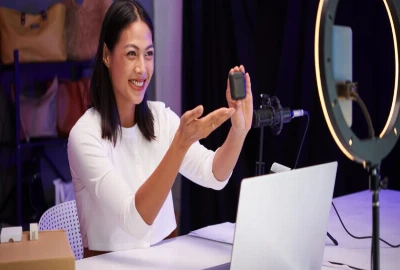Archive as Interface: Building New Stories from Old Footage

The word “archive” often conjures images of dusty film reels, sealed vaults, or static museums filled with artifacts. For decades, archives were viewed as repositories—a place to store and protect media for historical preservation. But in the age of digital storytelling, the archive is no longer just about preservation. It has become an interface: a dynamic creative tool through which old footage can be remixed, reinterpreted, and transformed into entirely new stories.
From experimental films and documentaries to TikTok edits and AI-generated mashups, today’s creators are reactivating archives as living ecosystems. They aren’t simply conserving the past—they’re redesigning how we engage with it. This blog explores how archives function as interfaces, the technologies that enable their reinvention, the ethics of reusing footage, and the cultural impact of building new narratives from old media.
Archive as Interface: Redefining the Role of Preservation

From passive storage to active storytelling
Traditional archives were designed for safekeeping, often meant to serve researchers, historians, or institutions. But when treated as interfaces, archives become tools for interaction—inviting creators and audiences to actively participate in shaping memory. This shift transforms archives from static collections into active cultural platforms.
The archive as a narrative device
By re-contextualizing archival footage, creators can craft new perspectives on history. For example, archival war footage can be juxtaposed with contemporary news coverage to highlight recurring social patterns. The act of editing itself becomes a form of storytelling, reframing the past for new generations.
Examples of archival storytelling
Projects like Adam Curtis’ documentaries, which weave together disparate archival clips into thematic meditations, show how the archive-as-interface creates meaning beyond its original context. Similarly, artists using public domain footage from institutions like the Prelinger Archives remix content to craft new cultural commentaries.
Technologies Enabling Archival Reuse

Digital restoration and accessibility
Digitization has made archives widely available, turning physical collections into searchable databases. Restoration technologies also ensure footage looks vibrant, allowing it to resonate with modern audiences.
AI-driven cataloging and remixing
Artificial intelligence has accelerated how archives can be navigated. Machine learning can tag footage, detect patterns, and even generate automatic summaries, making it easier for creators to identify and reuse material. AI can also remix footage, creating experimental outputs like “deepfake history” or generative documentaries.
Platforms and open access
Web-based archives, Creative Commons licensing, and digital libraries democratize access to footage. Platforms like Europeana, Internet Archive, and Wikimedia Commons provide material for creators worldwide, breaking down barriers to participation.
Technology not only preserves the archive but makes it malleable—ready for narrative experimentation.
Storytelling Through Remixed Memory

Creating new narratives from old fragments
When creators treat archival material as building blocks, they craft narratives that are simultaneously historical and imaginative. This allows for stories that honor the authenticity of the footage while bending it into contemporary cultural relevance.
Archival footage in documentaries and fiction
Modern documentaries like Amy or Apollo 11 rely heavily on archival footage, immersing viewers in moments that feel both historical and cinematic. In fiction, directors often integrate archival clips as “evidence” or stylistic contrasts, further blurring the line between reality and narrative.
Remix culture and participatory media
Online platforms have made remixing archival material part of mainstream culture. TikTok edits of vintage fashion shows or YouTube mashups of historical footage with modern soundtracks create playful but powerful cultural dialogues.
In these contexts, the archive becomes a shared canvas—a collaborative storytelling tool for anyone with access and creativity.
Ethical Questions Around Archival Storytelling

Authenticity versus reinterpretation
One major challenge is maintaining respect for the original material. When old footage is recontextualized, there’s always a risk of distorting meaning. Ethical storytelling requires balance—transforming without misrepresenting.
Ownership and licensing
Not all archives are open-access. Many collections remain protected by copyright, making questions of fair use and licensing crucial. Creators must navigate these restrictions responsibly, ensuring that innovation doesn’t come at the cost of legal or ethical violations.
Cultural sensitivity
Using archival footage of traumatic events, marginalized communities, or sacred traditions requires careful consideration. Reusing footage without cultural context can lead to exploitation rather than meaningful storytelling.
As archives shift into active creative tools, ethical frameworks become even more important to guide their use.
Archives as Collective Memory Systems

Preserving cultural identity
Archives aren’t just collections of media—they’re repositories of collective memory. By reactivating them, creators help communities preserve, reinterpret, and transmit identity across generations.
Community-driven archives
Grassroots projects, such as oral history initiatives or community film libraries, show how archives can be living systems. These projects often empower marginalized groups to take control of their narratives, building new stories from personal and collective memory.
Global perspectives
Digital archives break national and institutional barriers, allowing stories from different cultures to interact. A student in Brazil can remix footage from Japanese archives; an artist in Africa can reinterpret American newsreels. This global interconnectedness expands the cultural dialogue beyond borders.
Archives as interfaces are not only about revisiting the past—they’re about rewriting it collaboratively.
The Future of Archive-as-Interface Storytelling

Immersive and interactive archives
Virtual and augmented reality will allow audiences to step inside archival footage, exploring history as an embodied experience. Imagine walking through a recreated 1960s protest, built entirely from archival video and audio.
AI-generated archival simulations
Future archives may not only preserve the past but simulate it. AI could generate new footage in the style of historical archives, creating probabilistic “what if” scenarios that expand how we think about history and memory.
Archives as ongoing conversations
In the future, archives may become participatory platforms where users not only access footage but actively annotate, remix, and contribute to them—turning archives into endless dialogues across time.
This future sees the archive not as an endpoint of preservation but as the starting point of infinite narrative possibilities.




